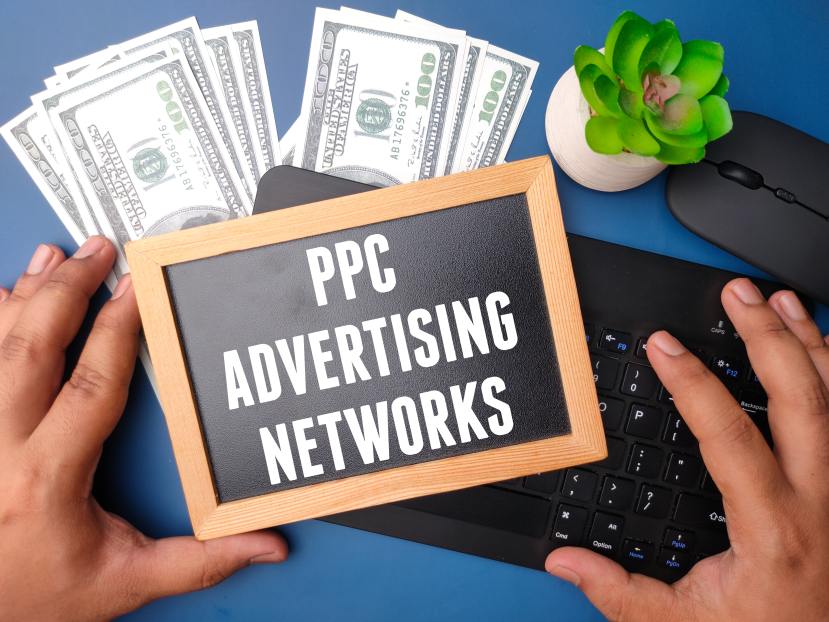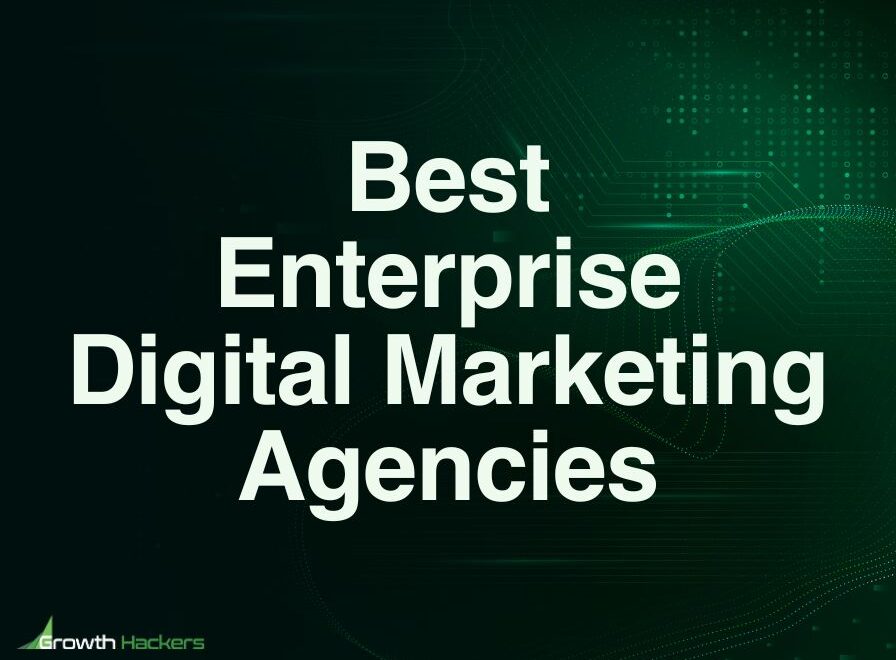In today’s fast-paced business landscape, B2B companies must leverage the most effective marketing channels to generate high-quality leads and sustain their growth. With a plethora of options available, it can be overwhelming to determine which B2B marketing channels are the best fit for your business.
In this comprehensive guide, we will explore twelve top B2B marketing channels for lead generation this year, providing valuable insights and strategies to help you make informed decisions and achieve your marketing goals.
The Need for B2B Digital Marketing Channels
B2B marketing channels refer to the various strategies and platforms that businesses use to reach and engage with their target audience. These channels play a critical role in lead generation and revenue growth for B2B companies. Choosing the right mix of channels is crucial to effectively reach and convert potential customers.
In recent years, the marketing landscape has significantly shifted toward digital channels. While traditional marketing efforts such as print ads and direct mail still have their place, digital B2B marketing channels offer cost-efficiency, trackability, and the ability to target highly qualified leads.
As a result, B2B companies are increasingly investing in digital marketing strategies to maximize their ROI and stay ahead of the competition.
In the following sections, we will explore 12 of the best B2B marketing channels for lead generation. Each channel offers unique advantages and can be tailored to fit your specific business needs and target audience. By implementing a strategic combination of multiple marketing channels, you can effectively reach and engage with potential customers, drive qualified traffic to your website, and ultimately convert leads into loyal customers.
1. Content Marketing: Engaging and Educating your Audience
Content marketing is a powerful B2B marketing channel that involves creating and distributing valuable, relevant, and consistent content to attract and engage your target audience. By providing informative and educational content, you can establish your brand as a thought leader in your industry and build trust with potential customers.
Effective content marketing strategies involve a mix of different content types, such as blog posts, whitepapers, case studies, infographics, and videos. Each piece of content should provide value to your audience, address their pain points, and offer solutions to their challenges.
When creating content, it is important to consider your target audience’s preferences and needs. Conduct research to understand the topics and formats that resonate with them the most. Additionally, optimize your content for search engines by incorporating relevant keywords and implementing SEO best practices.
To maximize the impact of your content marketing efforts, promote your content through various channels, including social media, email marketing, and guest blogging. Engage with your audience by encouraging comments, shares, and feedback, and use analytics tools to measure the performance of your content and make data-driven improvements.
2. Account-Based Marketing (ABM): Focusing on High-Value Accounts
Account Based Marketing (ABM) is a targeted marketing strategy that focuses on high-value accounts or individual companies as separate markets. Rather than casting a wide net and hoping to attract leads, ABM allows you to tailor your marketing efforts to the specific needs and challenges of each account.
The first step in implementing ABM is identifying the high-value accounts that align with your business goals. This can be done by analyzing factors such as company size, industry, and revenue potential. Once you have identified your target accounts, you can create personalized marketing campaigns to engage and nurture them.
ABM strategies often involve a combination of tactics such as personalized email campaigns, targeted content creation, and account-specific landing pages. By focusing your efforts on a smaller number of high-value accounts, you can deliver highly relevant and personalized messages that resonate with your target audience. This, in turn, allows your sales and marketing teams to convert leads into customers and drive revenue growth.
3. Display/Retargeting: Staying Top-Of-Mind with Targeted Ads
Display advertising and retargeting are powerful digital B2B marketing channels that allow you to stay top-of-mind with potential customers. Display ads are visually appealing banners or videos that are placed on relevant websites or social media platforms while retargeting ads specifically target users who have previously interacted with your brand.
Display advertising enables you to reach a wide audience and increase brand awareness. By strategically placing ads on websites or platforms that your target audience frequently visits, you can capture their attention and generate interest in your products or services.
Retargeting, on the other hand, focuses on re-engaging users who have visited your website or shown interest in your offerings. By placing retargeting pixels on your website, you can track users and display targeted ads to remind them of your brand.
To make display and retargeting campaigns successful, it is important to create compelling ad creatives, optimize targeting parameters, and monitor performance regularly. A/B testing different ad variations and targeting options can help you identify the most effective strategies, optimize your campaigns for maximum ROI, and boost web traffic along the way.
4. PPC/Paid Search: Driving Targeted Traffic to Your Website
PPC (Pay-Per-Click) advertising is a highly effective B2B marketing channel that enables you to drive targeted traffic to your website. With PPC, you bid on relevant keywords and pay a fee each time a user clicks on your ad. This allows you to reach potential customers who are actively searching for products or services similar to yours.
To make PPC campaigns successful, the marketing and sales teams should conduct keyword research and select relevant keywords that align with your business goals. Create compelling ad copy that attracts attention and includes a clear call to action. Landing pages should be optimized for conversions, providing a seamless user experience and compelling visitors to take the desired action.
Conduct regular monitoring and analysis of how your PPC campaigns perform. Leverage analytics tools to keep track of key metrics. Be flexible in targeting and bidding, and adjust your ad copy based on gathered data to improve your ROI and optimize digital marketing campaigns.
Do you need help making the most of the top B2B marketing channels?
Contact Growth Hackers
5. Influencer Marketing: Leveraging Industry Thought Leaders
Influencer marketing is a powerful B2B marketing channel that leverages industry thought leaders to amplify your message and boost credibility. By partnering with influencers, you can reach new audiences, build trust, and gain valuable endorsements for your products or services.
To implement influencer marketing, identify influencers in your industry who have a strong following and align with your brand values. Consider factors such as their expertise, engagement rates, and relevance to your target audience. Build relationships with these influencers through direct outreach, collaboration opportunities, or sponsored content.
Collaborate with influencers to create content that aligns with their expertise and resonates with their audience. Encourage influencers to share their experiences and endorsements with their followers, increasing brand visibility and generating interest in your offerings.
Measure the success of your influencer marketing campaigns by tracking key metrics such as engagement rates, reach, and conversions. Monitor audience sentiment and feedback to ensure that the partnership is positively impacting your brand reputation. Regularly communicate and maintain relationships with influencers to nurture long-term collaborations and maximize the benefits of influencer marketing.
6. Direct Mail: Personalized and Memorable Outreach
While digital marketing has gained prominence, direct mail remains a viable and effective B2B marketing channel. Direct mail allows you to stand out from the digital noise and create a personal connection with your target audience.
To make direct mail campaigns successful, it is essential to personalize your outreach. Segment your audience based on relevant criteria, such as industry, company size, or location, and tailor your messages accordingly. Personalization can extend beyond the content of the mail itself, including customized packaging or personalized URLs for tracking responses.
In addition to personalization, direct mail campaigns should be memorable and engaging. Consider using eye-catching designs, unique formats, and compelling copy to capture recipients’ attention. Including incentives, such as discounts or free samples, can also increase response rates.
To measure the effectiveness of your direct mail campaigns, track responses, and conversions using unique offer codes or dedicated landing pages. This data will provide insights into the success of your campaigns and help you refine your direct mail strategies.
7. SEO (Search Engine Optimization): Boosting Organic Visibility
Search Engine Optimization (SEO) is a critical B2B marketing channel that focuses on improving your website’s organic visibility in search engine results. By optimizing your website and content for relevant keywords, you can increase your chances of appearing in top search results when potential customers search for products or services in your industry.
Effective SEO strategies involve on-page optimization, including keyword research and implementation, meta tags optimization, and content creation. Off-page optimization, such as link building and social media engagement, also plays a crucial role in improving your website’s authority and visibility.
Enhance your website SEO with keyword research. Target keywords with low competition and high search volume. Place them strategically in the content, meta tags, and headings. Create high-quality, informative content that addresses your audience’s pain points and provides valuable solutions.
Additionally, build relationships with relevant websites and industry influencers to earn high-quality backlinks to your website. Engage with your audience on social media platforms, share your content, and encourage others to share and link to your website.
Regularly monitor your website’s performance using SEO tools and analytics. Track keyword rankings, organic traffic, and user engagement metrics to evaluate the success of your SEO efforts. Make data-driven optimizations to improve your website’s visibility and increase organic traffic.
8. Conferences/Trade Shows: Networking and Showcasing Products
Conferences and trade shows provide valuable opportunities for B2B companies to network, showcase their products or services, and learn from industry experts. These events bring together professionals from various industries, creating a platform for building connections and establishing brand visibility.
Attending conferences and trade shows allows you to engage with potential customers face-to-face, providing a unique opportunity to make a lasting impression. By setting up a booth or participating in speaking engagements, you can showcase your products, demonstrate your expertise, and generate leads.
To make the most of conferences and trade shows, it is essential to plan and prepare in advance. Define your goals for the event, identify the most relevant conferences or trade shows for your industry, and create engaging materials such as brochures, business cards, and branded merchandise. During the event, be proactive in networking, engage with attendees, and collect contact information for follow-up after the event.
.
9. Email Marketing: Building Relationships Through Lead Nurturing
Email marketing is a fundamental B2B marketing channel that allows you to nurture leads, build relationships with potential customers, and drive conversions. By sending targeted and personalized emails to your audience, you can deliver valuable content, promote your products or services, and stay connected with your subscribers.
The key to successful email marketing is to segment your audience based on relevant criteria, such as industry, job title, or previous interactions with your brand. This allows you to send highly relevant and personalized emails that resonate with each recipient.
Focus on offering value to your subscribers through relevant educational content, updates, exclusive offers, and industry insights. Personalize the emails with the recipient’s name, and use engaging subject lines and compelling visuals to capture their attention.
To maximize the effectiveness of your email campaigns, use marketing automation tools to streamline the process. These tools allow you to set up automated email sequences, segment your audience, and track the performance of your campaigns. Regularly analyze the data and make data-driven improvements to optimize your email marketing strategies.
10. Video Marketing: Captivating your Audience with Engaging Visuals
Video marketing is a highly engaging B2B marketing channel that allows you to captivate your audience with compelling visual content. Videos can communicate complex ideas quickly and effectively, making them an ideal format for educational content, product demonstrations, customer testimonials, and brand storytelling.
To incorporate video marketing into your strategy, identify the types of videos that align with your business goals and target audience. These can include explainer videos, how-to tutorials, thought leadership interviews, or behind-the-scenes glimpses of your company.
Ensure that your videos are well-produced, visually appealing, and professionally edited. Optimize your videos for search engines by incorporating relevant keywords in titles, descriptions, and tags. Promote your videos through your website, social media platforms, email marketing, and video-sharing platforms such as YouTube or Vimeo.
Engage with your audience through interactive video features such as annotations, clickable links, or quizzes. Encourage viewers to like, comment, and share your videos to increase their reach and generate buzz around your brand.
Regularly analyze the performance of your video marketing efforts using analytics tools. Track metrics such as views, engagement rates, and conversion rates to evaluate the success of your videos. Make data-driven optimizations to improve your content and deliver more engaging videos to your audience.
Now is the time to unlock B2B marketing success!
11. Native Advertising: Seamlessly Integrating your Message
Native advertising works by integrating the targeted promotional content with the concurrent marketing platform, giving users a non-disruptive experience. Native ads match the look and feel of the surrounding content, making them less intrusive and more likely to be engaged with by the audience.
To leverage native advertising effectively, carefully select the platforms and publishers that align with your target audience. Native ads can appear on websites, social media platforms, or in-app advertising networks. Work with publishers or native advertising platforms to create engaging and visually appealing ad creatives that blend seamlessly with the platform’s content.
When creating native ads, focus on providing value to the audience rather than overtly promoting your products or services. Craft compelling headlines and engaging visuals that capture attention and encourage users to click on the ad. Deliver valuable and informative content that aligns with the interests and needs of your target audience.
Regularly monitor the performance of your native advertising campaigns and optimize them based on key metrics such as click-through rates, engagement rates, and conversion rates. A/B testing different variations of ad creatives or targeting options can help you identify the most effective strategies and maximize your ROI.
12. Social Media Marketing: Building Relationships and Brand Personality
Social media marketing is an essential B2B marketing channel that allows you to build relationships, engage with your audience, and showcase your brand personality. Social media platforms provide a unique opportunity to humanize your brand, share valuable content, and interact directly with your target audience.
To effectively leverage social media marketing, identify the platforms that your target audience frequents the most. LinkedIn is often the go-to platform for B2B companies, as it is specifically designed for professional networking and business interactions. However, other platforms such as Twitter, Facebook, and Instagram can also play a significant role, depending on your industry and target audience.
Create a social media content strategy that aligns with your business goals and resonates with your audience. Share a mix of informative and entertaining content, including blog posts, industry news, case studies, infographics, and videos. Encourage engagement by asking questions, responding to comments, and participating in relevant industry conversations.
Social media advertising is another powerful tool within this channel. Platforms such as LinkedIn, Facebook, and Twitter offer advanced targeting options, allowing you to reach highly specific audiences based on demographics, job titles, or interests. Develop compelling ad creatives and optimize your targeting parameters to maximize the impact of your social media advertising campaigns.
Final Thoughts on The 12 Main B2B Marketing Channels
the selection and implementation of the right B2B marketing channels are essential for lead generation and revenue growth. By leveraging the 12 top B2B marketing channels discussed in this guide, you can effectively reach and engage with your target audience, drive qualified traffic to your website, and convert leads into loyal customers.
Remember that the B2B marketing landscape is constantly evolving. Stay informed about industry trends, experiment with new channels and strategies, and continuously adapt your approach to stay ahead of the competition.
By adopting a strategic and holistic approach to B2B marketing, you can position your business for success and beyond. And speaking of success, Growth Hackers is the B2B digital marketing agency you need to achieve healthy and sustainable business growth.
As a globally successful digital marketing agency, our unique approach to growth hacking ensures that all of our tactics are data-driven, tailored to your specific business, and continually optimized for the best results. With our expertise in SEO, social media marketing, content creation, and more, we know how to get your business noticed and keep it at the top of search results. Our team of dedicated growth hackers works tirelessly to optimize your online presence, so you can focus on what you do best – running your business.
Allow our cutting-edge digital marketing solution to lead the way to success. Contact Growth Hackers today to get started.










